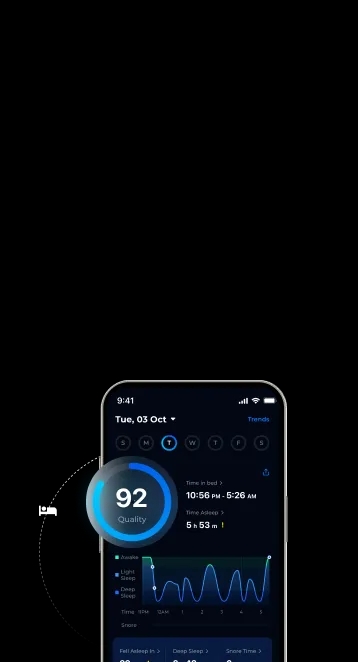


Interested in trying a new way of sleeping? Learn about the Dymaxion sleep cycle. This schedule involves taking four 30-minute naps every 6 hours. It may help you be more productive and alert.
Find out the advantages, disadvantages, and risks of this unique sleep pattern created by Buckminster Fuller in the 1930s. Explore the world of Dymaxion and see if this different schedule fits your needs.
The Dymaxion schedule can help you be more flexible with your daily activities. Instead of one long sleep, you take four 30-minute naps spread out evenly during the day, totaling just two hours of sleep.
This flexibility lets you adjust your nap times to fit your lifestyle and commitments. It could give you more time for work, hobbies, or personal interests.
The Dymaxion schedule’s adaptability is a key benefit of polyphasic sleep. It allows you to try different ways of organizing your day while getting less total sleep.
Dymaxion sleep can be risky for your health. It involves taking four 30-minute naps every 6 hours without a main sleep. This pattern can cause chronic sleep deprivation unless you naturally need very little sleep.
The Dymaxion schedule, created by Buckminster Fuller, is tough, has a low success rate, and isn’t very flexible. Naps in this schedule often reach deep sleep around 25 minutes, making waking up hard and leading to grogginess and a lack of dreams.
Adjusting to Dymaxion, like Uberman, may need supervision and is very challenging. Before trying this tough sleep routine, be careful and consider talking to a healthcare professional.

Dymaxion sleep can affect how well your brain works. This sleep schedule involves taking four 30-minute naps spread out during the day, without a long sleep at night. This kind of sleep pattern may lead to not getting enough sleep.
When you don’t get enough sleep, it can make you less alert, impact your memory, and make it harder to make decisions. Your overall mental sharpness may also be affected. The Dymaxion sleep schedule doesn’t allow your body to rest properly, which can make cognitive issues worse.
It’s important to think about these possible effects on your brain before deciding to follow the Dymaxion sleep pattern. These effects could affect how well you perform during the day and how you feel overall.
The Dymaxion sleep schedule involves taking four 30-minute naps every 6 hours with no core sleep. This extreme sleep pattern can have health consequences. Following this schedule might cause chronic sleep deprivation unless you naturally need very little sleep.
The disrupted sleep pattern can affect your body clock, thinking abilities, and overall health. Sleep deprivation, which is common with the Dymaxion schedule, can lower alertness, reaction time, and mental well-being.
It’s important to think about the health effects of such a challenging sleep routine, as not getting enough rest can harm your physical and mental health.

When following the Dymaxion schedule, it’s important to consider adding ‘exercise’ to your routine. While Dymaxion allows for longer periods of wakefulness between naps, it’s important to be careful with exercise.
Working out on the Dymaxion sleep schedule is possible, but it may lead to muscle soreness and slower recovery because of less sleep. It’s crucial to find a balance between exercise and the structured naps of the Dymaxion schedule to avoid overdoing it and potential health issues.
Before adding intense physical training to your Dymaxion routine, it’s recommended to consult a healthcare provider or fitness expert. Prioritizing rest and recovery is key to staying healthy while following the unique demands of the Dymaxion polyphasic sleep schedule.
When you’re thinking about trying the Dymaxion polyphasic sleep schedule, it’s good to compare it with other polyphasic schedules like Uberman and Everyman. Knowing the differences between these schedules can help you choose the one that fits your lifestyle and sleep needs best.
Here’s a simple comparison to show the main variations between the Dymaxion schedule and other popular polyphasic schedules:
| Sleep Schedule | Total Daily Sleep | Flexibility | Difficulty |
|---|---|---|---|
| Dymaxion Schedule | No core sleep, four 30-minute naps every 6 hours | Limited flexibility due to rigid nap schedule | Extremely challenging due to longer nap intervals |
| Uberman Schedule | Two hours total daily from six 20-minute naps | Minimal flexibility with fixed nap times | High difficulty with strict nap requirements |
| Everyman Schedule | Four hours total from night sleep and three 20-minute naps | Moderate flexibility with night sleep | Moderate difficulty balancing night sleep and naps |
Comparing these schedules can help you figure out which one matches your sleep habits, daily routine, and ability to handle potential risks linked to polyphasic sleep.
In short, the Dymaxion Polyphasic Sleep Schedule can help you be more productive and alert, but it also has risks.
Adjusting to this different sleep pattern needs lifestyle changes and dedication.
Not everyone may find the Dymaxion schedule suitable, but those open to trying it may have a positive and life-changing experience.
Eugene, A. R., & Masiak, J. (2015). The Neuroprotective Aspects of Sleep. MEDtube science, 3(1), 35–40.
Polyphasic Sleep Wiki (n.d.). Dymaxion [online]. available at: https://polysleep.org/wiki/Dymaxion